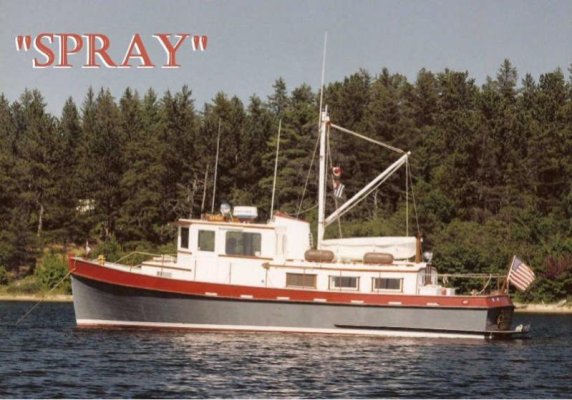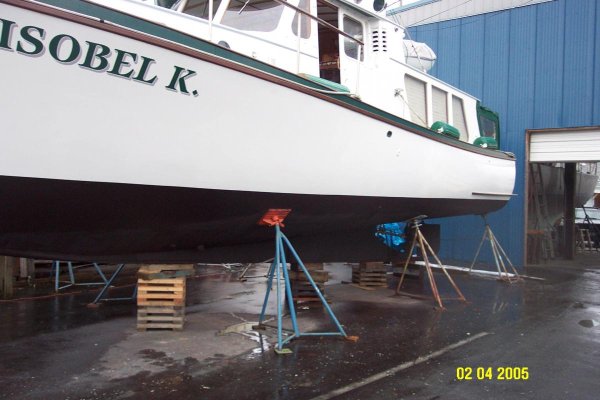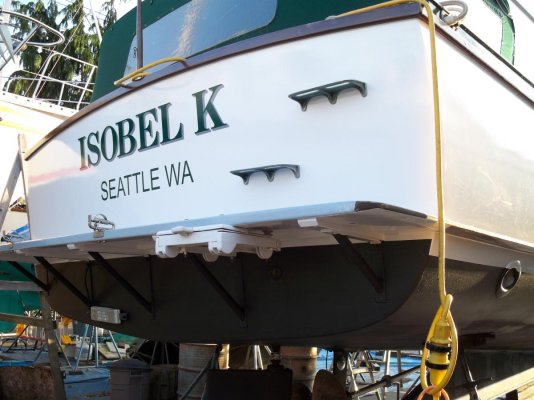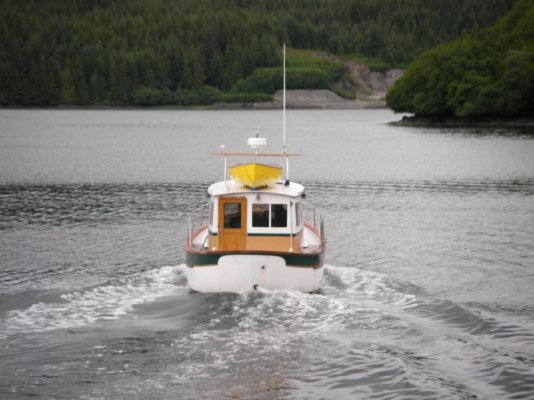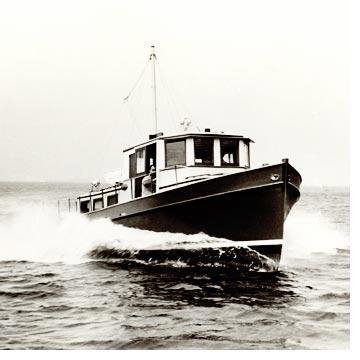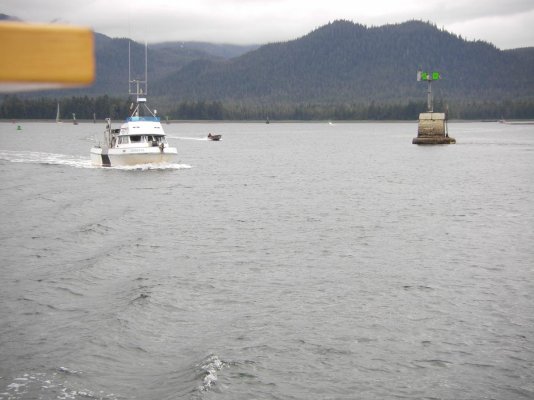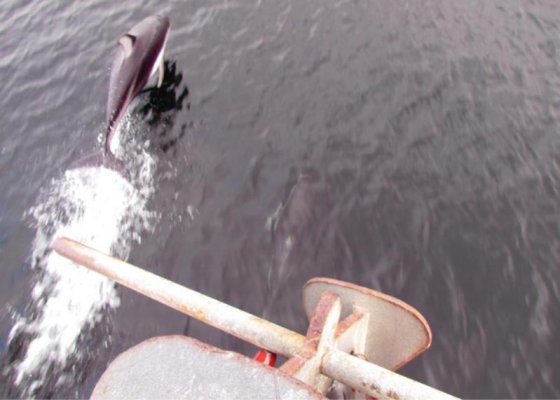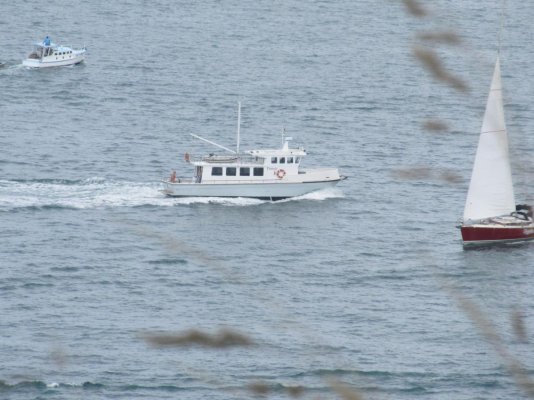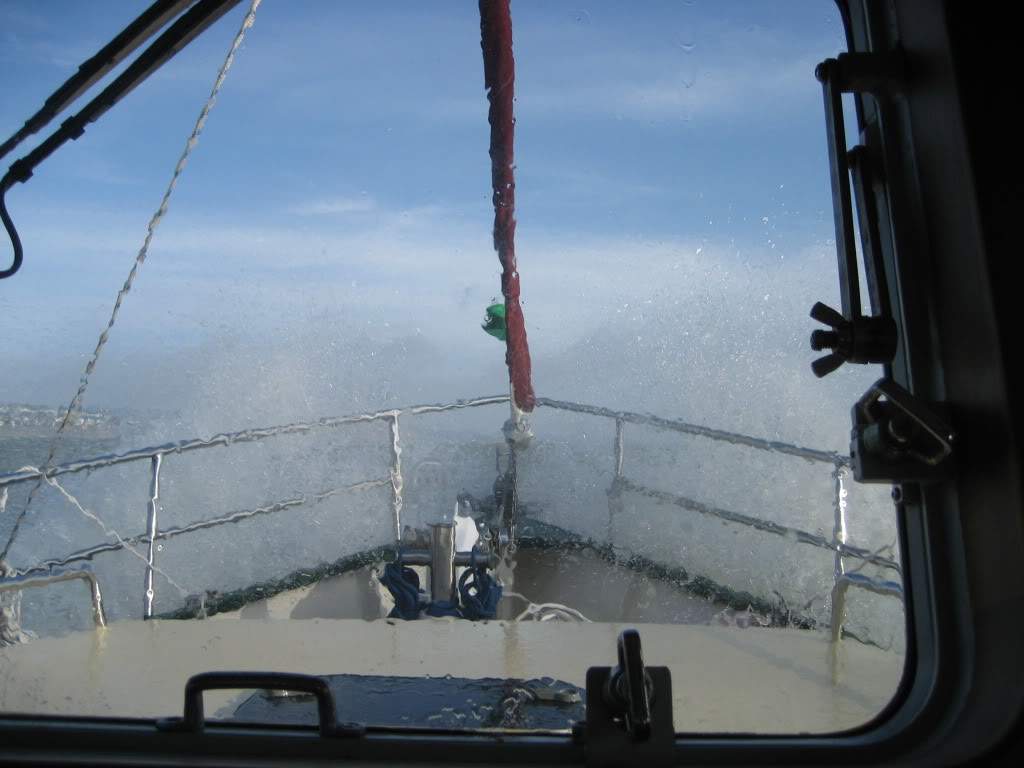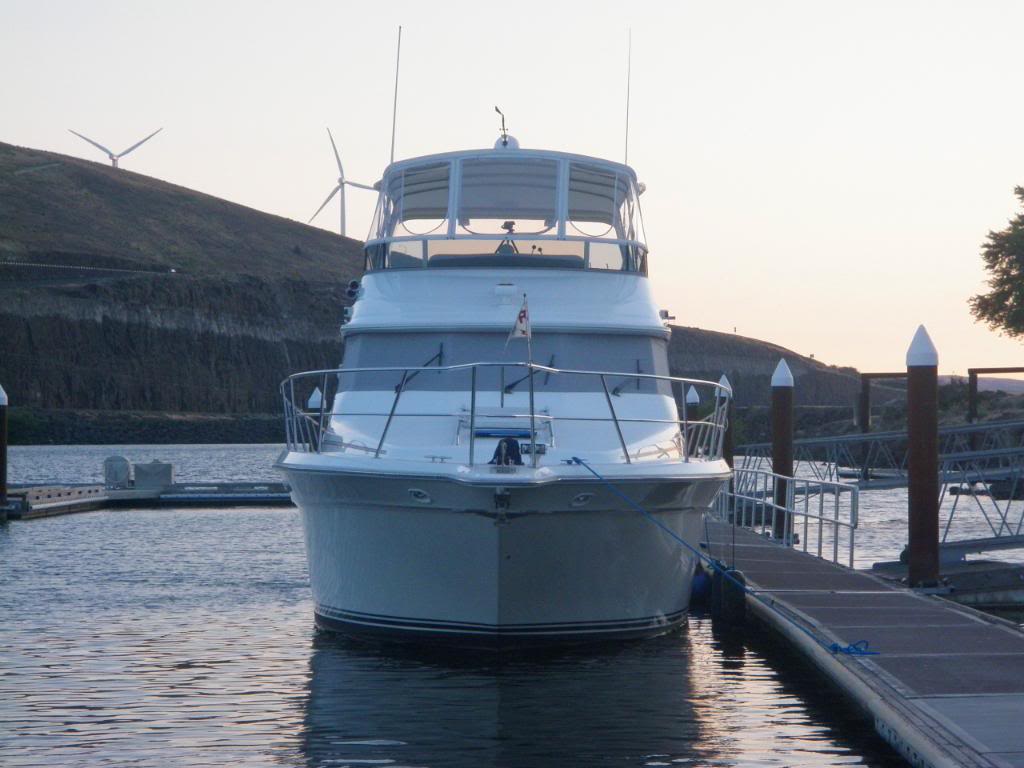Our GB36 has the exact same Kenneth Smith hull as Spray. That's why American Marine hired him.

The wood G36 hulls were built identically to Spray's and the original molds for the fiberglass GB36 were an exact copy of the wood hull complete with the cove lines. There is one hull difference between the GB36 and Spray but it is above the waterline, and that is the incorporation of the "break" or "step" in the sheer line about 2/3 of the way aft. But below the water the hulls are identical.
The only difference between Spray's underbody and ours is that our boat, being a twin, has the keel curving back up into the hull instead of ending in a rudder shoe and rudder.
I've seen newer GBs, ones with larger engines, clipping along at 12 to 14 or 15 knots and their bow waves look just like Spray's in the photo. While I did not go out to look over the side at our bow, when we ran the boat up to WOT to get the rpm figures for the prop shop a few years ago, the bow came up a lot. As I recall we were doing some 11 knots or so indicated and I imagine we looked pretty much like Spray.
In 1988 they made new molds for the GB36 and 42 and both boats got a tiny bit longer, a wee bit wider, and significantly taller although the hull configuration did not change. But the pre-1988 GB36s have hulls identical to Spray's. I don't know the weight of Spray but it's in the same ballpark as the wood GB36s. The main difference would be the addition of the flying bridge structure to the top of the GB36 main cabin.
I have no idea how fast Spray is going in that photo. I doubt it's 15 knots. I can't recall what kind of engine Spray has, or had then, but it was not much different than an FL120 and I think--- but I could be wrong--- it was actually a bit less power.
Here are two other shots of Spray, one from 1964 or thereabouts and one quite recent showing her as she looks today. As of the other year Spray lived in the mid-west, I believe on one of the Great Lakes.
PS-- I just did a search on the GB owners forum to see if I could find anything about Spray's specs. I ran out of time to do a complete search but I did unearth this--- Spray was considered by American Marine to be the first GB36. When they started building GB36s in 1965, they assigned Spray an official hull number. She is GB36-000

